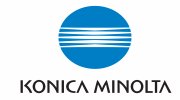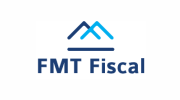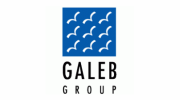However, to date there have been no published empirical trials testing the effectiveness of the approach. Elucidating the „active ingredients“ of CBT treatments remains an important and challenging goal. Consistent https://aboutweeks.com/bandage-of-the-stomach.html with the RP model, changes in coping skills, self-efficacy and/or outcome expectancies are the primary putative mechanisms by which CBT-based interventions work 126. One study, in which substance-abusing individuals were randomly assigned to RP or twelve-step (TS) treatments, found that RP participants showed increased self-efficacy, which accounted for unique variance in outcomes 69. Further, there was strong support that increases in self-efficacy following drink-refusal skills training was the primary mechanism of change.
Theoretical and empirical rationale for nonabstinence treatment
In Europe, about half (44–46%) of individuals seeking treatment for AUD have non-abstinence goals (Haug & Schaub, 2016; Heather, Adamson, Raistrick, & Slegg, 2010). In the U.S., about 25% of patients seeking treatment for AUD endorsed nonabstinence goals in the early 2010s (Dunn & Strain, 2013), while more recent clinical trials have found between 82 and 91% of those seeking treatment for AUD prefer nonabstinence goals (Falk et al., 2019; Witkiewitz et al., 2019). Withdrawal tendencies can develop early in the course of addiction 25 and symptom profiles can vary based on stable intra-individual factors 63, suggesting the involvement of tonic processes. Despite serving as a chief diagnostic criterion, withdrawal often does not predict relapse, perhaps partly explaining its de-emphasis in contemporary motivational models of addiction 64. However, recent studies show that withdrawal profiles are complex, multi-faceted and idiosyncratic, and that in the context of fine-grained analyses withdrawal indeed can predict relapse 64,65.
Journal of Studies on Alcohol
Relapse Prevention (RP) is another well-studied model used in both AUD and DUD treatment (Marlatt & Gordon, 1985). In its original form, RP aims to reduce risk of relapse by teaching participants cognitive and behavioral skills for coping in high-risk situations (Marlatt & Gordon, 1985). More recent versions of RP have included mindfulness-based techniques (Bowen, Chawla, & Marlatt, 2010; Witkiewitz et al., 2014). The RP model has been studied among individuals with both AUD and DUD (especially Cocaine Use Disorder, e.g., Carroll, Rounsaville, & Gawin, 1991); with the largest effect sizes identified in the treatment http://anfiz.ru/books/item/f00/s00/z0000034/st049.shtml of AUD (Irvin, Bowers, Dunn, & Wang, 1999).
- Phasic responses include cognitive and affective processes that can fluctuate across time and contexts–such as urges/cravings, mood, or transient changes in outcome expectancies, self-efficacy, or motivation.
- For example, Bandura, who developed Social Cognitive Theory, posited that perceived choice is key to goal adherence, and that individuals may feel less motivation when goals are imposed by others (Bandura, 1986).
- This can include abstinence from substance abuse, overeating, gambling, smoking, or other behaviors a person has been working to avoid.
- To do so, they adapt their coping strategies to better deal with future triggers should they arise.
Models of nonabstinence psychosocial treatment for SUD

One of the key features of the AVE is its potential to trigger a downward spiral of further relapse and continued substance use. Alan Marlatt is a professor of Psychology and Director of the Addictive Behaviors Research Center at the University of Washington. He has received continuous funding for his research from a variety of agencies including the National Institute on Alcohol Abuse and Alcoholism, the National Institute on Drug Abuse, the Alcoholic Beverage Medical Research Foundation, and the https://www.altzone.ru/forums.php?m=posts&q=3929&n=last Robert Wood Johnson Foundation. Rather than labeling oneself as a failure, weak, or a loser, recognizing the effort and progress made before the lapse can provide a more balanced perspective. For Jim and Taylor, this might involve acknowledging the months of sobriety and healthier lifestyle choices and understanding that a single incident does not erase that progress. Having a solid support system of friends and family who are positive influences can help you to remain steady within your recovery.
A basic assumption is that relapse events are immediately preceded by a high-risk situation, broadly defined as any context that confers vulnerability for engaging in the target behavior. Examples of high-risk contexts include emotional or cognitive states (e.g., negative affect, diminished self-efficacy), environmental contingencies (e.g., conditioned drug cues), or physiological states (e.g., acute withdrawal). Although some high-risk situations appear nearly universal across addictive behaviors (e.g., negative affect; 25), high-risk situations are likely to vary across behaviors, across individuals, and within the same individual over time 10. Whether a high-risk situation culminates in a lapse depends largely on the individual’s capacity to enact an effective coping response–defined as any cognitive or behavioral compensatory strategy that reduces the likelihood of lapsing. Most notably, we provide a recent update of the RP literature by focusing primarily on studies conducted within the last decade.
- RP strategies can now be disseminated using simple but effective methods; for instance, mail-delivered RP booklets are shown to reduce smoking relapse 135,136.
- Consistent with the tenets of the reformulated RP model, several studies suggest advantages of nonlinear statistical approaches for studying relapse.
The neurocognitive correlates of non-substance addictive behaviors
Perhaps the most notable gap identified by this review is the dearth of research empirically evaluating the effectiveness of nonabstinence approaches for DUD treatment. Given low treatment engagement and high rates of health-related harms among individuals who use drugs, combined with evidence of nonabstinence goals among a substantial portion of treatment-seekers, testing nonabstinence treatment for drug use is a clear next step for the field. Ultimately, nonabstinence treatments may overlap significantly with abstinence-focused treatment models. Harm reduction psychotherapies, for example, incorporate multiple modalities that have been most extensively studied as abstinence-focused SUD treatments (e.g., cognitive-behavioral therapy; mindfulness). However, it is also possible that adaptations will be needed for individuals with nonabstinence goals (e.g., additional support with goal setting and monitoring drug use; ongoing care to support maintenance goals), and currently there is a dearth of research in this area.
The AVE describes the negative emotional response that often accompanies a failure to maintain abstinence from drugs or alcohol. Ivori Zvorsky is an undergraduate student obtaining her major in psychology at the University of Richmond, USA. Working with Dr Lindgren, she has investigated implicit alcohol cognitions, along with the impact of the environment on self-reported measures of alcohol consumption. She hopes to continue investigating implicit and explicit measures of substance abuse in the future. In the multifaceted journey of overcoming addiction and living a healthier life, individuals often encounter a psychological phenomenon known as the abstinence violation effect (AVE). It sheds light on the challenges individuals face when attempting to maintain abstinence and how a single lapse can trigger a surge of negative emotions, potentially leading to a full relapse or a return to unhealthy living (Collins & Witkiewitz, 2013; Larimer, Palmer, & Marlatt, 1999).

Directions for Future Research
Support for her work has been provided by the National Institute on Alcohol Abuse and Alcoholism and the University of Washington’s Alcohol and Drug Abuse Institute. One day, when he was faced with a stressful situation, he felt overwhelmed, gave in to the urge, and had a drink. I have lost all that time,” which can trigger a self-destructive mindset and potentially lead to further relapse.
For example, clients can be encouraged to increase their engagement in rewarding or stress-reducing activities into their daily routine. Overall, the RP model is characterized by a highly ideographic treatment approach, a contrast to the „one size fits all“ approach typical of certain traditional treatments. Moreover, an emphasis on post-treatment maintenance renders RP a useful adjunct to various treatment modalities (e.g., cognitive-behavioral, twelve step programs, pharmacotherapy), irrespective of the strategies used to enact initial behavior change. A specific process has been described regarding attributions that follow relapse after an extended period of abstinence or moderation.






















